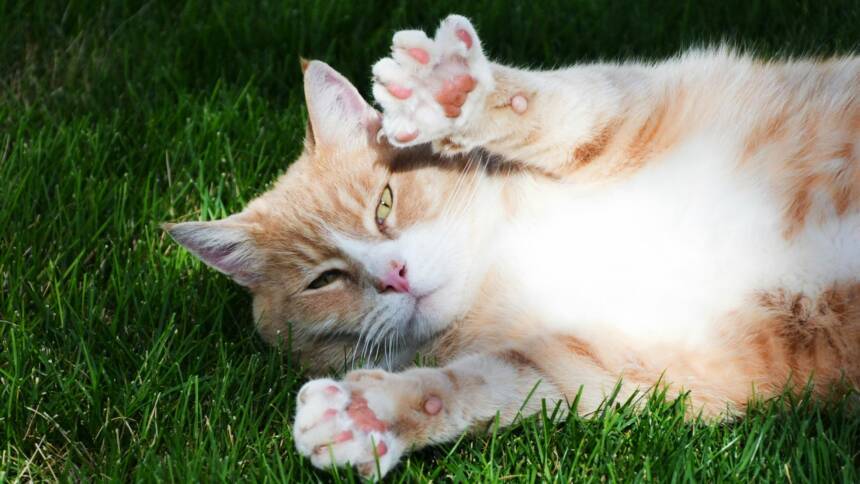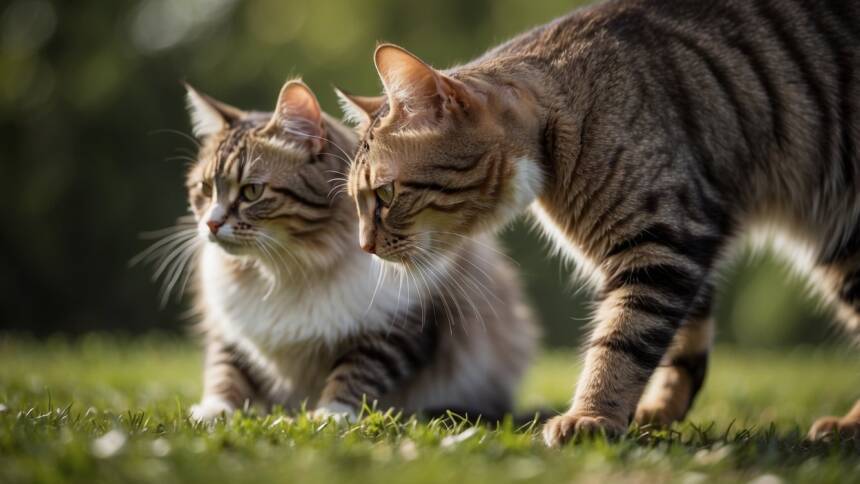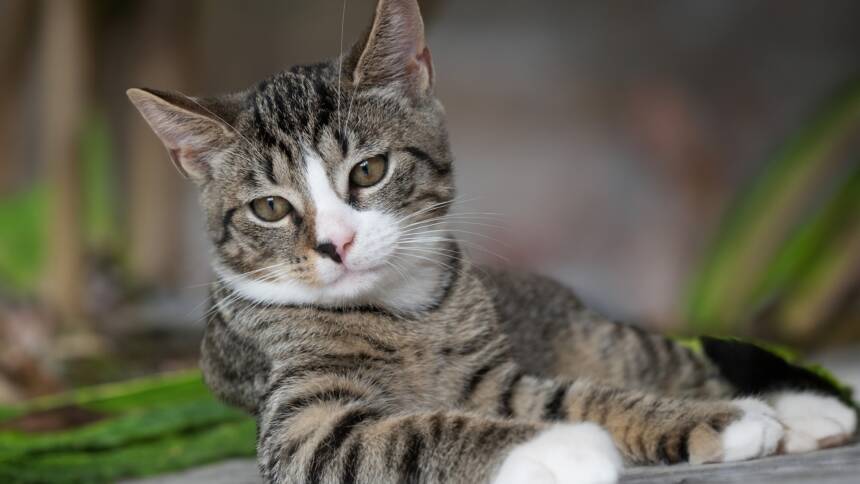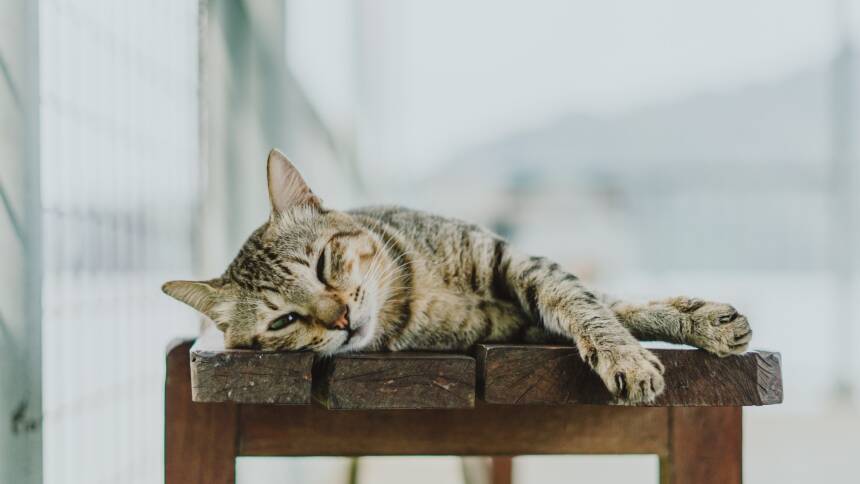Cat urine, while often seen as a mere nuisance in homes with felines, can pose health risks to humans. Since it contains proteins, bacteria, and ammonia, exposure to cat urine can have various implications. These proteins may trigger allergies in sensitive individuals, leading to respiratory symptoms or skin irritation. Additionally, the bacteria found in cat urine can potentially cause infections if it comes in direct contact with the skin.
Moreover, when cat urine is left to decompose, it can release ammonia gas. High concentrations of ammonia, which may occur particularly in areas with poor ventilation, can irritate the eyes, nose, throat, and skin. For people with compromised immune systems or respiratory conditions, the health risks are elevated, and caution is advised.
It is essential to handle cat urine promptly and safely to minimize health risks. Protective gloves should be worn during cleanup to avoid skin contact. Maintaining cleanliness and hygiene in areas where cats are present, including litter boxes, is crucial in reducing the spread of bacteria and ensuring a healthy living environment for both cats and humans alike.
Understanding Cat Urine
Cat urine is a complex substance that provides insights into a cat’s health and behavior. It has a distinctive composition with a potent smell and can have various health implications for humans upon direct contact.
Composition and Characteristics
Cat urine is predominantly made up of water, but its other components cause the noticeable odor and potential staining. The primary components include:
- Urea: This chemical is responsible for the ammonia-like smell as it breaks down.
- Uric Acid: Unlike urea, uric acid doesn’t dissolve well in water and can linger on surfaces.
- Creatinine: A byproduct of muscle metabolism.
- Proteins: Small amounts are normally present in cat urine.
These elements, especially urea, lead to a potent ammonia scent when cat urine is left to decompose. It’s this ammonia component that can be particularly irritating to humans. Cats’ high-protein diets cause their urine to be more concentrated, which means it often has a stronger smell and is darker in color than that of humans.
Health Implications
When cat urine comes into contact with human skin, it’s important to understand the health implications of the substances involved:
- Ammonia: Can irritate the skin, eyes, throat, and lungs.
- Uric Acid: Generally not harmful to the skin but can contribute to the persistence of stains and odors.
- Bacteria: Urine can contain bacteria, which might pose an infection risk if the skin is broken.
Immediate and thorough washing of the skin with soap and water is advised after contact with cat urine to prevent any irritation or possible allergic reactions. It is important to note that while cat urine has a strong odor, it is usually not harmful to the skin unless an individual has specific sensitivities or allergies.
Immediate Actions for Skin Exposure
When an individual is exposed to cat urine on their skin, prompt and careful cleaning is paramount to reduce the risk of irritation or infection. Immediate steps should be taken to mitigate skin discomfort such as redness or burning sensations.
First Aid Procedures
Upon skin contact with cat urine, one should:
- Remove Clothing: If clothing is contaminated, it should be promptly removed to prevent further skin exposure.
- Rinse Skin Thoroughly: Using lukewarm water, rinse the affected skin area immediately to dilute and remove the urine.
- Gentle Cleansing: Apply a mild soap to the area, lather gently, and rinse again thoroughly. Avoid aggressive scrubbing, which may exacerbate irritation.
- Pat Dry: With a clean, soft cloth or towel, gently pat the affected skin dry. Do not rub, as this may cause further irritation.
- Observe the Affected Area: After cleaning, observe the skin for signs of redness or irritation. If symptoms are present, a cool compress can help to soothe the area.
When to Seek Medical Attention
Medical attention should be sought if:
- Persistent Irritation: If irritation, redness, or a burning sensation persists after cleaning, it is advisable to consult a healthcare professional.
- Significant Exposure: In cases of extensive exposure or if the urine is from an unknown cat, one should consider seeking medical advice to rule out potential risks of infection.
- Pre-Existing Conditions: Individuals with pre-existing skin conditions or sensitivities should consult a healthcare professional as they may be more prone to complications.
Health Risks of Cat Urine on Human Skin
Exposure to cat urine on human skin can lead to various health risks, including skin conditions, respiratory problems, and infectious diseases. The severity of these health risks often depends on the duration and extent of exposure, as well as the individual’s health status.
Skin Conditions
When cat urine comes into contact with human skin, it can cause skin irritation due to the presence of ammonia and other toxins. For individuals with sensitive skin, or those who are allergic to cats, this contact may result in allergic reactions such as redness, itching, or inflammation.
Respiratory Concerns
The toxic gas ammonia, which is present in cat urine, can irritate the respiratory system if inhaled, potentially causing respiratory issues. This is particularly concerning for individuals with pre-existing respiratory problems like asthma or bronchitis, as it can exacerbate their conditions and lead to symptoms such as coughing and wheezing.
Infectious Diseases
Cat urine can harbor bacteria that pose the risk of bacterial infections, especially when coming into contact with cuts or other open wounds on the skin. The risk is higher in immunocompromised individuals and pregnant women, due to the potential of contracting zoonotic diseases like toxoplasmosis, which can cause serious health complications. Moreover, cats’ grooming habits can contaminate their urine with feces, increasing the likelihood of human infection.
Understanding and Managing Allergies
When it comes to allergies, especially those related to cat urine, understanding the common allergic reactions and ways to protect sensitive groups are crucial for managing the condition effectively.
Common Allergic Reactions
Allergies to cats, including reactions to proteins found in cat urine, manifest through various symptoms that can affect individuals differently. Fel d 1, a protein present in cat allergens, is a common trigger for allergy sufferers. Here are some typical symptoms associated with cat allergies:
- Respiratory Symptoms: sneezing, coughing, wheezing, or a stuffy nose
- Skin Reactions: itchy skin or the appearance of hives upon contact
- Ocular Symptoms: irritated or red eyes, commonly accompanied by watering
- Asthmatic Reactions: an asthma attack in people with asthma, triggered by inhaling allergenic particles
Protecting Sensitive Groups
Sensitive groups, particularly children and individuals with weakened immune systems, require specific strategies to minimize exposure to allergens. Effective measures can include:
- Allergen Avoidance: limit direct skin contact with cats and routinely clean areas where cats frequent
- Environmental Controls: use of high-efficiency particulate air (HEPA) filters to reduce airborne allergens
- Hygiene Measures: washing hands after handling cats and promptly cleaning any cat urine from surfaces to reduce the presence of Fel d 1 allergen
Preventive Measures
When it comes to minimizing the risks associated with cat urine on human skin, two critical factors play a dominant role: adhering to strict hygiene and cleanliness practices, and ensuring diligent litter box maintenance. These proactive steps help to reduce contact with harmful bacteria and potential toxins found in cat urine.
Hygiene and Cleanliness
Daily Habits:
- Wash hands: Regularly using soap and water, especially after handling the litter box, prevents the transfer of bacteria from cat urine residue.
- Use protective gloves: When cleaning areas soiled by cat urine, gloves shield the skin from direct contact with harmful substances.
Cleaning Spots:
- Immediate action: Quickly cleaning any urine spills on surfaces with appropriate disinfectants minimizes bacteria spread.
- Regular sanitization: Surfaces in homes with indoor cats should be sanitized routinely to reduce the risks associated with lingering urine.
Proper Litter Box Maintenance
Litter Box Upkeep:
- Regular scooping: Removing waste daily from the litter box lowers the chance of urine buildup and ammonia development.
- Full change: Completely changing the cat litter weekly, or as recommended by the litter brand, maintains a clean and odor-free environment.
Optimal Placement:
- Good ventilation: Positioning the litter box in a well-ventilated area reduces the concentration of ammonia fumes emitted from cat urine.
- Separate space: Keeping the litter box in a dedicated area, away from where the family congregates, limits exposure to urine.
Adherence to these guidelines not only protects human health but also contributes to a hygienic living environment for both humans and their feline companions.
Caring for Your Cat’s Health
Maintaining optimal health in cats is multifaceted, with regular veterinary visits and keen observation of behavioral changes being crucial aspects.
Regular Veterinary Visits
Veterinarians play a pivotal role in the prevention, diagnosis, and treatment of various health issues in cats. It is recommended that a cat should undergo at least annual check-ups. As a cat advances in age or if it has chronic conditions like kidney disease or diabetes, more frequent visits may be necessary. Regular veterinary check-ups often include:
- Physical Examination: Assessing the cat’s overall health.
- Vaccinations: Up-to-date shots to protect against common diseases.
- Dental Checks: Prevention of dental issues which can affect overall health.
- Blood Tests: Early detection of diseases such as kidney disease or diabetes.
- Weight Monitoring: Prevention of obesity, which can lead to other health complications.
- Urinalysis: Check for signs of urinary tract infections or cystitis.
Observing Behavioral Changes
Behavior can be a strong indicator of a cat’s health. Owners should watch for changes that may suggest an issue, such as:
- Changes in Litter Box Use: Could indicate a urinary tract infection or diabetes.
- Altered Eating or Drinking Habits: Decreased appetite can be a warning sign, while increased drinking could suggest kidney disease or diabetes.
- Vocalization or Activity Changes: May indicate pain or discomfort.
Dehydration in cats often goes unnoticed but can lead to serious health problems, including cystitis. An owner should ensure that their cat has access to fresh water at all times, particularly if the cat eats dry food. A cat’s skin elasticity, checked by gently pulling up on the skin at the back of the neck, can also be an indicator of dehydration.
By attending regular veterinary visits and observing behavioral changes, pet owners can play an active role in safeguarding their cat’s health.
Chemical Nature and Cleanup of Cat Urine
Cat urine contains various compounds, including urea, which breaks down into ammonia. Inappropriate handling or prolonged exposure to cat urine can have health implications. Enzymatic cleaners are often recommended for effective cleanup to neutralize the odor and break down the organic matter.
Effects of Ammonia Exposure
When cat urine is left uncleaned, it breaks down into ammonia, which can irritate the skin, eyes, throat, and lungs if humans are exposed to high concentrations or for long periods. Symptoms of ammonia exposure from cat urine may include:
- Skin irritation: Contact can lead to redness or itching.
- Respiratory discomfort: Inhaling ammonia can cause coughing and sore throat.
Proper litter box maintenance is crucial in managing ammonia levels in the household environment.
Safe Cleanup Practices
To minimize health risks and maintain a clean environment, the following practices are recommended for cleaning up cat urine:
- Initial Removal:
- Absorb fresh urine immediately with paper towels.
- Avoid rubbing the spot to prevent urine from spreading deeper into materials.
- Cleaning Solutions:
- Apply enzymatic cleaner; it breaks down urine at the molecular level.
- Let the cleaner sit to allow enzymes to work, then blot up excess liquid.
- Regular Litter Box Care:
- Clean the litter box regularly to prevent urine accumulation.
- Replace litter and wash the box with mild detergent frequently.
Utilization of these safe practices helps prevent negative health effects and maintains a hygienic living space for both pets and their owners.








